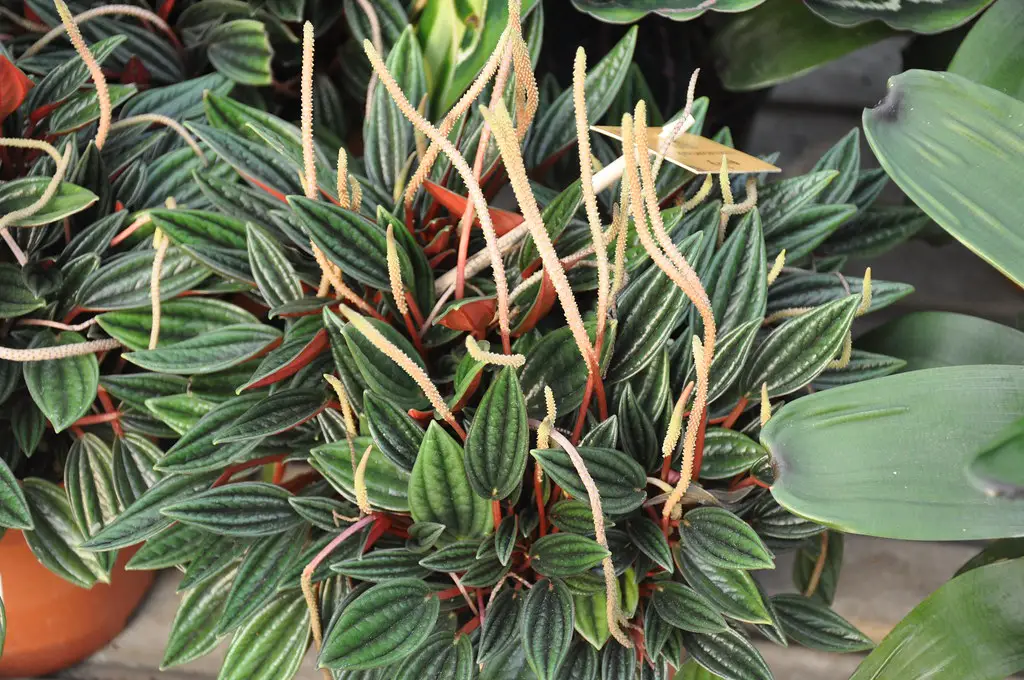Peperomia caperata, which is commonly known as Emerald Ripple Peperomia, is a semi-succulent species of Peperomia and is a common type of houseplant. There are many cultivars or variations of Peperomia caperata, but they all have ripply leaves that have a leathery texture. These plants are fairly compact and grow to be about 8 inches tall and 8 inches wide. In addition to being small, this plant is tolerant of low light conditions and is fairly low maintenance making it a perfect plant for offices or dark corners.
The table below outlines how to care for your Peperomia caperata.
| Scientific Name | Peperomia caperata |
| Common Name | Emerald Ripple Peperomia |
| Lighting Requirements | Grows best in medium light but can tolerate low light conditions for several months. Does best in partial shade if grown outdoors. |
| Watering Requirements | Allow the top 4-5 inches of soil to dry out completely between watering sessions. Water more sparingly during the winter. |
| Temperature | Grows best in temperatures between 60°F and 80°F USDA Hardiness Zones 9b-11a |
| Humidity | Relative humidity of at least 40% to 50% |
| Fertilization | Fertilize once per year with an all-purpose houseplant fertilizer diluted to half strength. |
| Soil | Well-draining soil comprised of 3 parts potting soil and 1 part perlite. |
| Repotting | Only needs to be repot when the plant has outgrown its container. Repot during the spring. |
| Propagation | Stem cutting |
| Toxicity | Non-toxic to cats and dogs |
The rest of this blog post will serve as a more detailed care guide for Peperomia caperata.
About Peperomia caperata
Peperomia caperata is a tropical plant that is native to the jungles of South American. In its natural habitat, this plant grows epiphytically. This means that it grows on other plants and trees rather than in soil.
Peperomia caperata is often referred to as Emerald Ripple Peperomia due to its wrinkled leaves. It is a common houseplant because it is a low-maintenance plant that is tolerant of low-light conditions.
Peperomia caperata Blooms
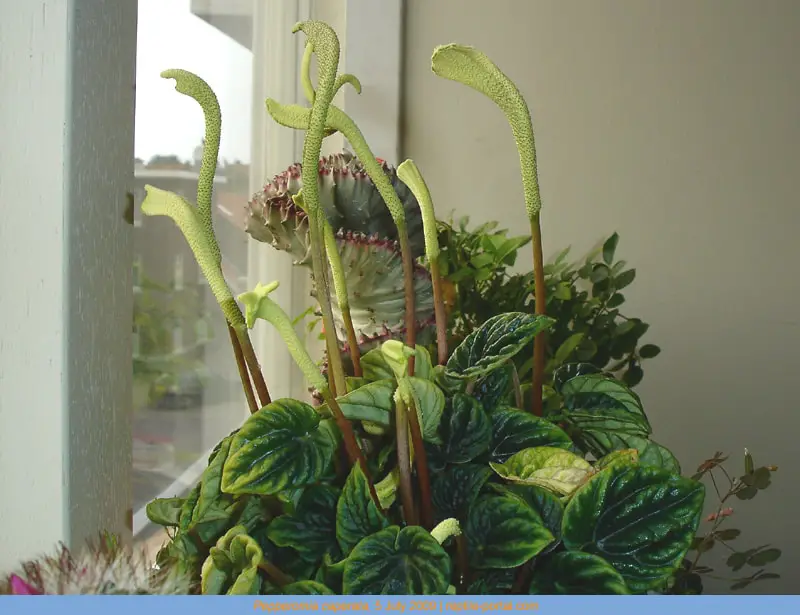
Peperomia caperta will produce white flower spikes during the summer and autumn months. These flower spikes are typically white or cream in color.
Cultivars of Peperomia caperata
There are several cultivars or varieties of Peperomia caperta, but the most common cultivar is Peperomia caperta ‘Rosso,’ and Peperomia caperta ‘Emerald Ripple’ is closest to the original habitat.
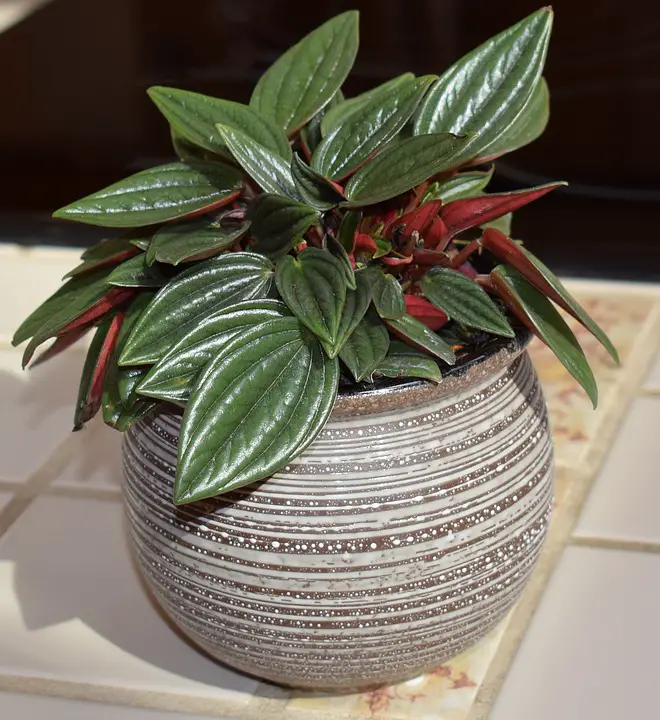
Peperomia caperta ‘Rosso’ 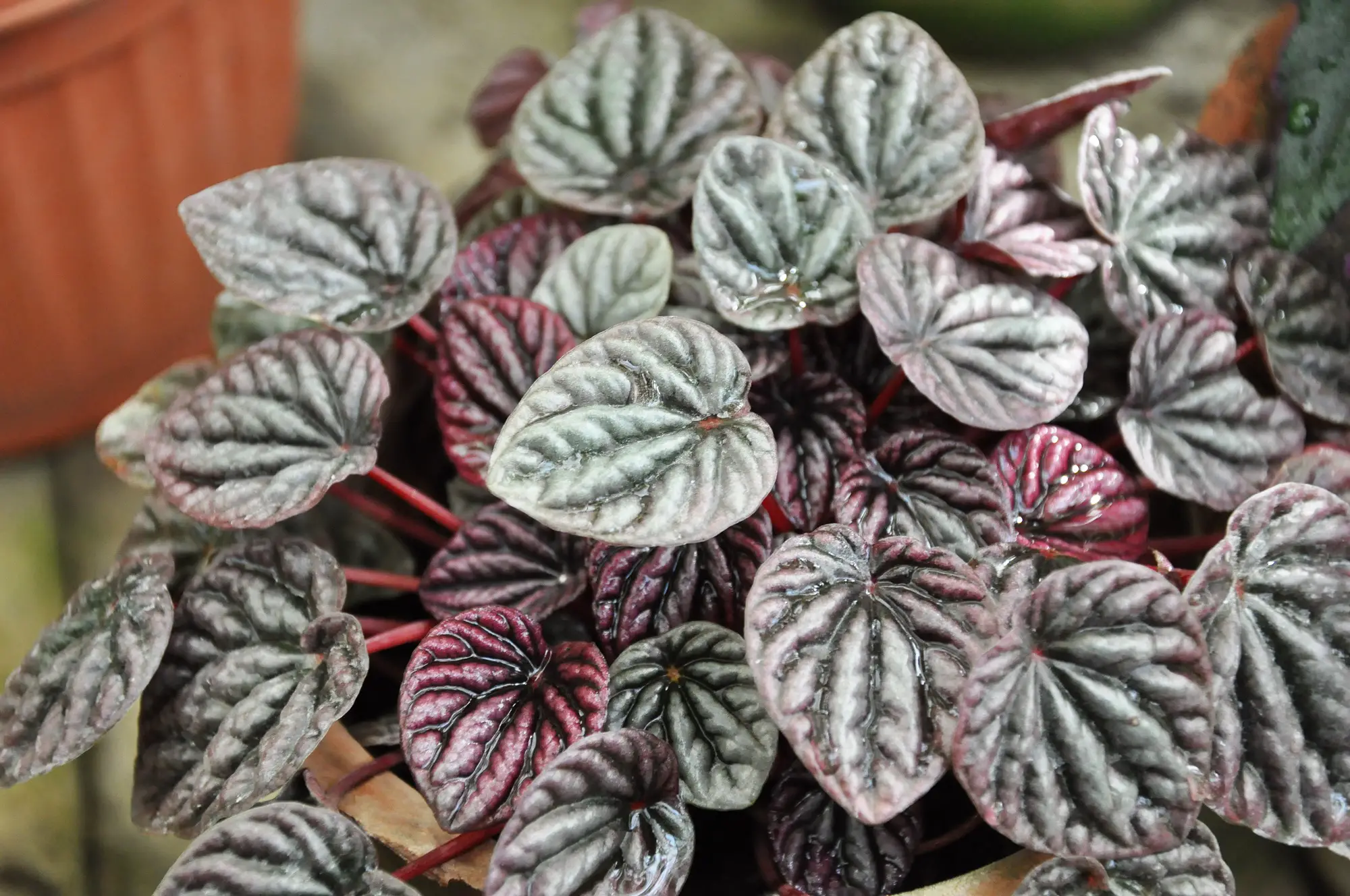
Peperomia caperta ‘Emerald Ripple’ 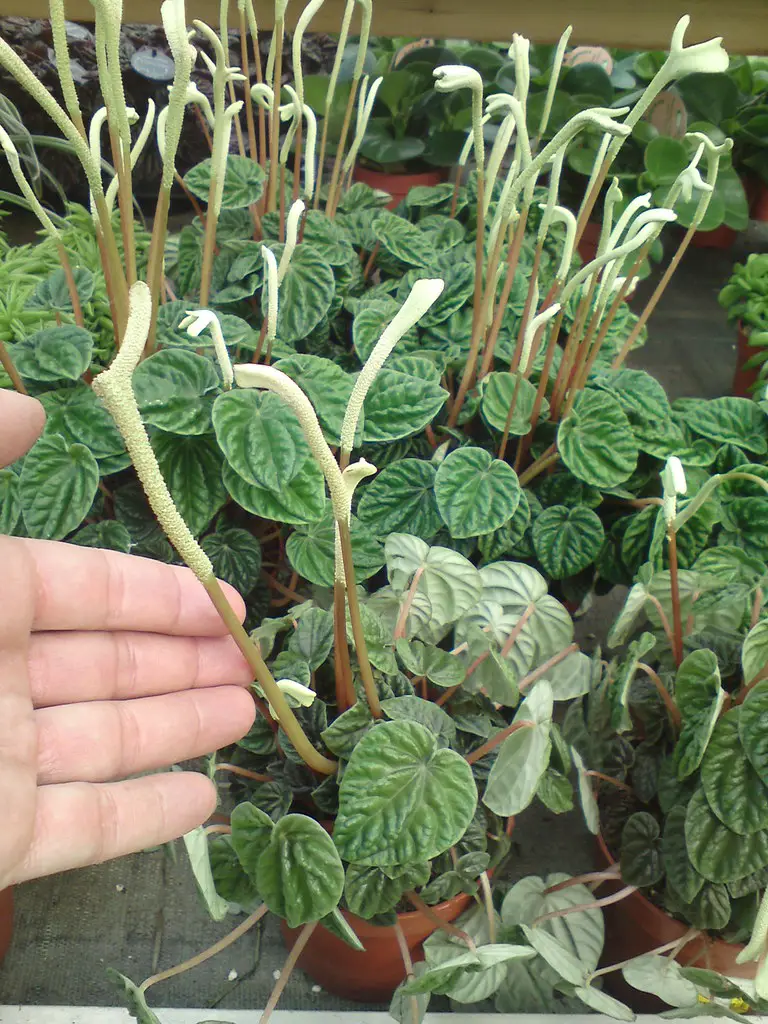
Peperomia caperta ‘Lilian’ 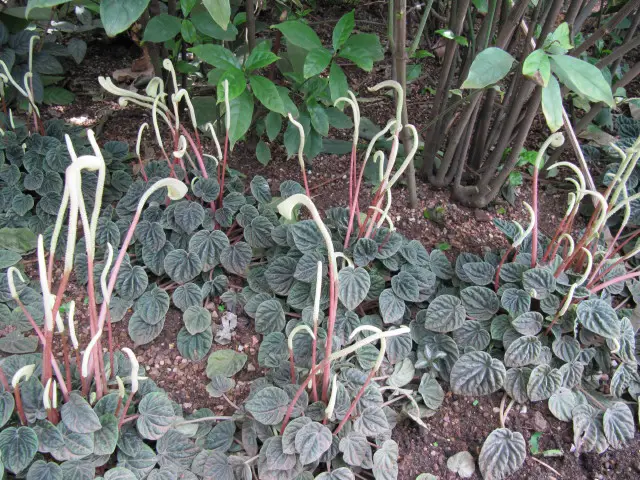
Peperomia caperata ‘Cristata’
Lighting Requirements For Peperomia caperata
Peperomia caperata grows best when kept in a location that is exposed to medium light that is typical of north-facing or east-facing windows. However, it can tolerate low-light conditions for several months. Although plants do best when they receive natural sunlight, these plants will also do well under fluorescent lighting.
Peperomia caperata can also be grown outdoors as a low-growing ground cover. When grown outdoors, these plants do best in partial shade. Ideally, they should only be exposed to direct sunlight for 2-6 hours each day. These conditions mimic Peperomia caperata‘s natural habitat.
Watering Peperomia caperata
Although Peperomia caperta is a low-maintenance plant, it does require consistent watering during its growing season which extends from spring through fall.
To avoid overwatering your Peperomia caperata, it is important to allow the top 4-5 inches of soil to dry out completely between watering sessions. Peperomia caperta grows more slowly during the winter months, so water more sparingly during that time.
Signs of underwatering include limp, droopy leaves, and very dry soil. Soft leaves are also a sign that your Peperomia caperata is thirsty. If your Peperomia caperata begins to show signs that it needs water, give the plant a good soak.
How To Handle A Possible Root Rot Problem
Overwatering can cause root rot, which is the most common houseplant killer. Black stems and yellow leaves are a telltale sign of an overwatering issue. If only a few stems or leaves turn black, cut them off and remove the plant from its pot to see whether the roots are healthy. If the roots look healthy, there is a good chance your plant will survive if you cut back on watering. However, black, mushy roots indicate that the plant will not recover. In this case, it is best to throw the plant away.
Ideal Temperature Range For Peperomia caperata
Peperomia caperata grows best in temperatures above 55°F. According to North Carolina State University’s Extension office, Peperomia caperata is winter hardy in United States Department of Agriculture zones 9b through 11a. These plants are not tolerant of frost.
Suitable Humidity Levels For Peperomia caperata
Like other tropical houseplants, Peperomia caperata prefers to grow in a humid environment similar to their native habitat. However, these plants will do okay in a normal home environment (relative humidity between 40% and 50%) as long as they are not placed on top of a radiator or near an air conditioning unit that could dry them out.
While these plants will survive in drier home environments, Peperomia caperata will appreciate a more humid environment. A good way to increase the humidity in the vicinity of the plant is to run a small humidifier for a couple of hours each day.
Fertilizing Peperomia caperata
Peperomia caperata is a slow-growing epiphyte, so it does not need frequent feeding. Some houseplant enthusiasts argue that Peperomia caperata can go its entire life without fertilization because it can get everything it needs from the soil
Although these plants do not need fertilizer to survive, fertilization can increase the plant’s growth rate and give your plant a healthier appearance. Fertilize Peperomia caperata once per year with an all-purpose fertilizer diluted to half strength.
Over-fertilizing can be harmful to Peperomia caperata. Signs of excessive fertilization include a white crust forming on the soil surface. If you see signs of over-fertilizing, flush the soil profile with water to prevent fertilizer burn.
Best Soil Mix For Peperomia caperata
Peperomia caperata does best when grown in well-draining soil. Good drainage prevents issues with standing water that may lead to root rot. An appropriate soil mix may be comprised of three parts potting soil and one part perlite.
Repotting Peperomia caperata
You only need to repot Peperomia caperata after the plant has outgrown its container. Repot Peperomia caperata during the springtime. It is important that you move Peperomia caperata to a container that is only one size (1 or 2 inches) larger than the previous pot. A container that is too large will hold too much water and cause root rot.
Propagating Peperomia caperata
The best time to propagate Peperomia caperata is during the spring and summer.
The easiest way to propagate Peperomia caperata is to put a stem cutting in water. Use sharp scissors to remove a stem cutting. Then dip the cutting in root hormone and put the cutting in water. The cutting will root within a couple of weeks. Then plant the rooted cutting in moist soil.
Is Peperomia caperata Toxic?
According to the American Society for the Prevention of Cruelty to Animals (ASPCA), Peperomia caperata is non-toxic to cats, dogs, and horses.

